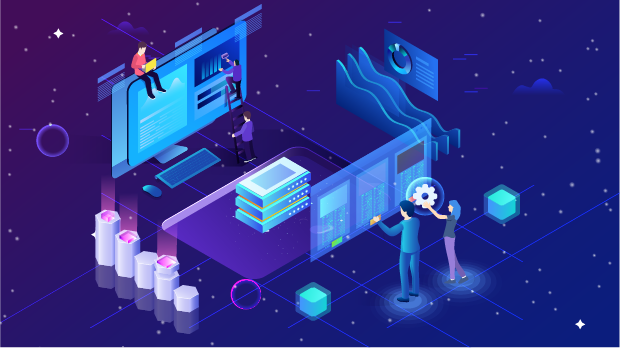In the ever-expanding world of global digital operations, efficient and secure cross-border HTTP access is crucial for businesses, particularly when it comes to data transfer across regions. This article compares the performance of two popular proxy services, PYPROXY and Bigmama Proxy, focusing on their effectiveness in handling cross-border HTTP requests. Both have been widely used in various industries, but understanding their strengths and weaknesses is vital for choosing the right solution. Introduction to Cross-border HTTP Access and Proxy ServicesCross-border HTTP access plays a significant role in the global connectivity of businesses, governments, and consumers. With the growing demand for seamless international operations, proxy services have become essential in bypassing geographic restrictions, ensuring privacy, and maintaining data security. A proxy server acts as an intermediary between a client and the internet, masking the client’s actual IP address and providing access to restricted or blocked resources.PyProxy and Bigmama Proxy are two prominent players in the proxy service market. They offer distinct features that cater to different user needs, making them ideal for various cross-border HTTP access scenarios. Let’s dive into a detailed comparison of their performance in this domain.Performance Speed and LatencyWhen evaluating proxy services, speed and latency are two of the most crucial factors for a smooth cross-border browsing experience. These elements can significantly impact user satisfaction and operational efficiency. Here’s how PyProxy and Bigmama Proxy perform:- PyProxy: Known for its advanced routing algorithms, PyProxy offers relatively low latency. It uses a network of high-performance servers strategically located worldwide, allowing it to provide fast connections for users accessing content across borders. However, the performance may vary depending on the region. For users in regions with limited server presence, latency might increase slightly.- Bigmama Proxy: Bigmama Proxy, on the other hand, has a larger number of servers spread across different continents, providing more options for routing traffic efficiently. This extensive network allows Bigmama Proxy to achieve consistent speed across various regions. Its latency tends to be lower than PyProxy’s, especially when connecting from areas where PyProxy has fewer servers.In summary, Bigmama Proxy excels in terms of speed and latency due to its broader server infrastructure, ensuring a more reliable and faster connection for users with global requirements.Security FeaturesThe security of cross-border HTTP access is essential to ensure the safety of sensitive data. Proxy services must offer robust security protocols to prevent unauthorized access and data breaches.- PyProxy: PyProxy uses state-of-the-art encryption technologies, including SSL and TLS, to ensure secure data transmission. Additionally, PyProxy offers features like IP rotation, making it more difficult for malicious actors to trace the user’s activities. However, its security protocols may not be as comprehensive as Bigmama Proxy in handling complex security threats.- Bigmama Proxy: Bigmama Proxy stands out in terms of its security features. It integrates advanced encryption protocols and provides features like IP masking, multi-layer encryption, and enhanced anonymity for users. Furthermore, Bigmama Proxy offers better protection against potential attacks, including DDoS and man-in-the-middle (MITM) attacks, making it a more secure option for users prioritizing safety.Overall, Bigmama Proxy offers more comprehensive security measures, making it the better option for users requiring a high level of protection during cross-border HTTP access.Reliability and UptimeFor businesses relying on consistent and uninterrupted access to cross-border HTTP services, uptime and reliability are critical factors. Here’s how both proxy services compare in terms of reliability:- PyProxy: PyProxy has a solid reputation for maintaining stable uptime, with most users experiencing minimal service interruptions. However, it can occasionally experience short outages, particularly in regions where server load is high. This might impact businesses that require 24/7 availability.- Bigmama Proxy: Bigmama Proxy is known for its high reliability and uptime, often boasting a near-perfect track record. With more servers and a more robust network infrastructure, Bigmama Proxy is less prone to outages and is better equipped to handle heavy traffic loads, ensuring a more consistent experience for users globally.Bigmama Proxy edges ahead in terms of reliability and uptime, making it a more dependable option for businesses with high-demand, cross-border HTTP access requirements.Cost-EffectivenessWhile performance is essential, cost-effectiveness also plays a crucial role in choosing a proxy service. Let’s explore how PyProxy and Bigmama Proxy compare in terms of pricing:- PyProxy: PyProxy is generally more affordable than Bigmama Proxy, making it an attractive option for smaller businesses or individuals with a limited budget. It offers competitive pricing for basic proxy services, though some advanced features, like higher levels of encryption or premium server access, come at an additional cost.- Bigmama Proxy: Bigmama Proxy is typically more expensive due to its extensive infrastructure and premium services. While the higher cost may be a deterrent for smaller users, it offers superior value for larger businesses or those with demanding cross-border HTTP needs. The premium pricing ensures that users get access to advanced features, superior security, and a more reliable service.For businesses that need robust and consistent performance, Bigmama Proxy may justify the higher cost. However, for those on a tighter budget, PyProxy remains a more affordable option with decent performance.Global Compatibility and AccessibilityCross-border access often requires compatibility with various regions and countries. The ability of a proxy service to provide seamless access in different geographical areas is crucial.- PyProxy: PyProxy works well in regions with high internet traffic, offering good compatibility with websites and services worldwide. However, in certain restricted regions, users may face occasional issues with accessing content, particularly in areas where internet censorship is prevalent.- Bigmama Proxy: Bigmama Proxy shines in this category, offering a more extensive network that covers a wide range of geographical locations. Its ability to bypass regional restrictions and censorship is one of its strong points. Whether users are located in the Americas, Europe, Asia, or other regions, Bigmama Proxy ensures smooth and unrestricted cross-border HTTP access.Bigmama Proxy offers superior global compatibility, making it the better choice for users who need unrestricted access across various countries and regions.In conclusion, both PyProxy and Bigmama Proxy offer strong performance in cross-border HTTP access, but they cater to different user needs. PyProxy is an excellent option for users seeking affordability and reasonable performance, while Bigmama Proxy provides enhanced speed, security, reliability, and global compatibility, making it a superior choice for businesses that prioritize these factors.When choosing between the two, users must weigh their requirements for speed, security, cost, and global accessibility. For businesses dealing with high traffic, security concerns, and cross-border restrictions, Bigmama Proxy is the more comprehensive and reliable option. On the other hand, for smaller businesses or users on a budget, PyProxy offers a good balance of affordability and decent performance.
Sep 05, 2025



































































